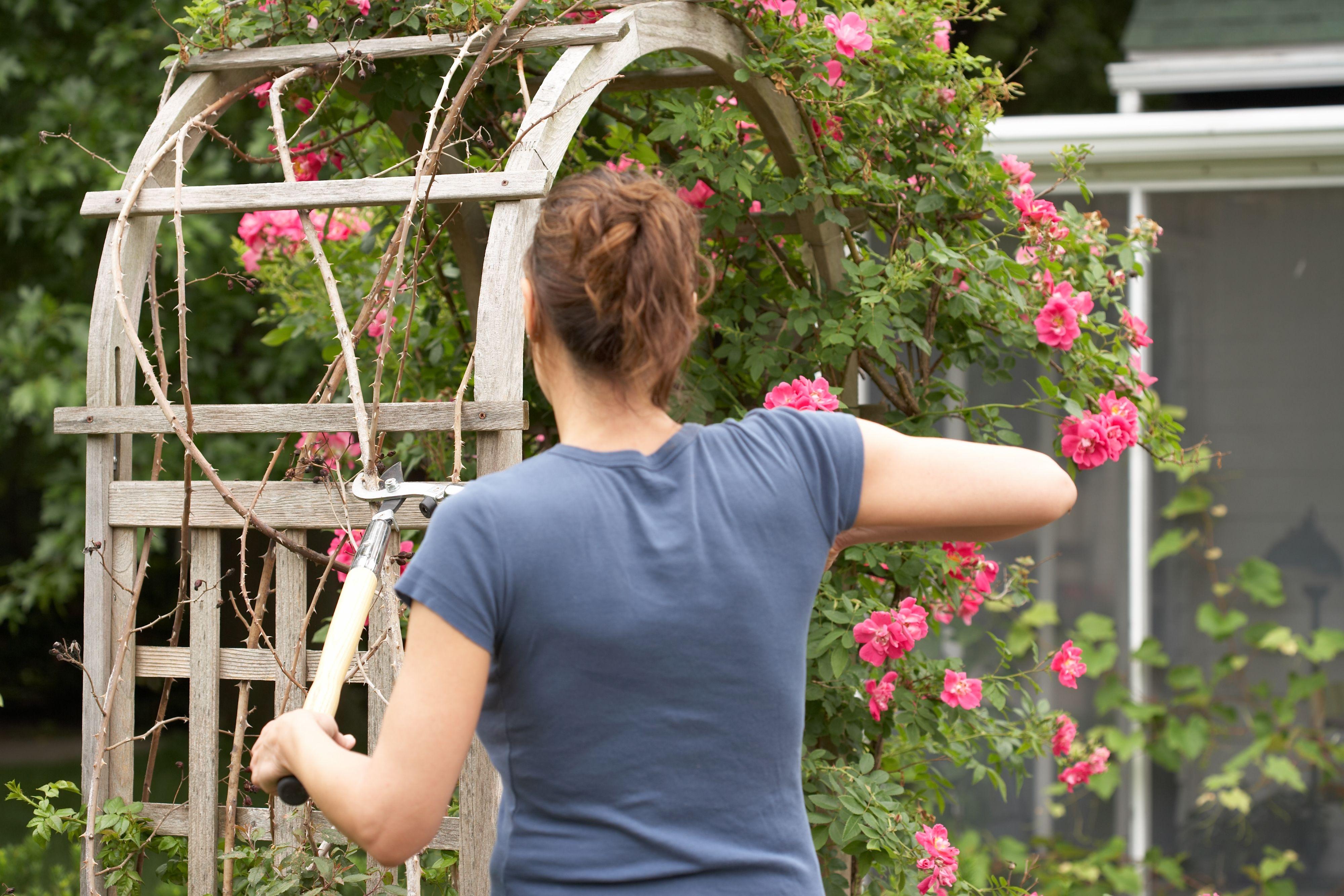Key Takeways
- Leafy vines can be pruned any time during the year.
- Vines that flower in spring should be pruned soon after the bloom.
- The best time to prune summer-flowering vines is in late winter to early spring.
Most vines benefit from a trim now and then, whether it’s a bit of judicious pinching to redirect growth or more severe pruning to reinvigorate growth. What’s not as apparent is when it’s best to do the pruning. The simple answer: it depends on the type of vine. There are flowering vines and leafy vines, as well as annual vines and perennial vines.
Though most vines are vigorous growers that forgive pruning mistakes, proper pruning is especially important for flowering vines to avoid jeopardizing next year's bloom. Here is what you need to know about pruning vines.
Leafy Vines vs. Flowering Vines
Leafy vines grown for their foliage can be cut back practically any time during the growing season. The same goes for removing dead, diseased, infested, or damaged stems, no matter what kind of vine it is. And, of course, there’s no time like the present to cut back errant or unruly shoots that are a nuisance or safety hazard.
Timing becomes much more important with flowering vines. A simple way to tell when to prune is to consider bloom time. Vines that bloom early in the season—before summer—do so on the previous year’s growth (old wood). Prune those vines promptly after flowering has finished. This will ensure the vine has time to develop new flower buds for next year. Examples include wisteria, akebia, jasmine, and spring-blooming clematis.
Vines that bloom later in the season—summer or fall—showcase flowers on the current year’s growth (new wood). They can be pruned in late winter or early spring because there’s still time for new growth to develop and form new flower buds. It’s best to prune before buds swell, so generally late winter in the South, and early spring in the North. Examples of summer-blooming vines include honeysuckle vine, trumpet vine, and passionflower.
Cut back vines that can become a nuisance through self-seeding, such as black-eyed Susan vine, before the seeds form.
Related
Annual Vines vs. Woody Vines
Annual vines sprout from seed, grow, bloom and set seed all in the same growing season. In mild climates where the winter chill may not kill an annual vine, it should be cut back in fall after a cold snap has killed the top growth. In cold climates, the only pruning required is training stems to grow in a desired direction or cutting back unwanted shoots during the growing season.
Woody vines are perennial in nature, coming back year after year if they’re grown in the proper hardiness zone. Except for spring-blooming vines, it's best to prune woody vines in late winter to early spring, before new growth starts. It’s easier to see the structure at that time, so it’s a good time to thin out excessively woody old growth and stems showing damage from winter cold, insects, or disease.
When pruning woody vines, be sure to remove any suckers that appear at the base, especially on grafted vines such as climbing roses, so top growth remains true to the cultivar. Some woody vines can be drastically pruned to keep their size in check (although it’s obviously a better idea to plant vines that won’t outgrow their space). Examples include vigorous wisteria and trumpet vine. Do this renewal pruning in late winter or early spring.
Dean Schoeppner
What to Prune
In addition to dead, diseased, and damaged stems, remove stems that are tangled, unruly, or weak and poorly performing. Also cut out unwanted suckers that spoil a vine’s appearance. If removing diseased stems, cut back to healthy wood. Take the extra precaution of disinfecting pruning blades with a 10-percent bleach solution between cuts to avoid spreading disease.
Container-grown vines fresh from the garden center rarely need pruning at the time of planting. However, it’s good to trim any long, spindly shoots by up to one-quarter to encourage new, thicker growth. In subsequent years, pinch back overly aggressive shoots to balance a vine’s growth habit.
When pruning vines, do not leave stubs; instead, cut within ¼ inch of a bud pointing in the direction you want the vine to grow.



